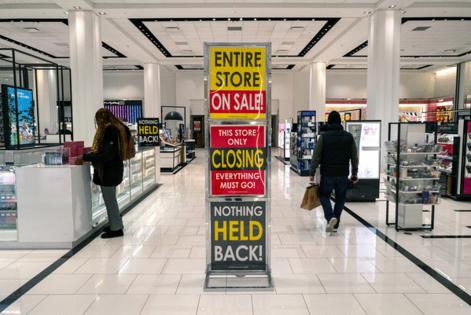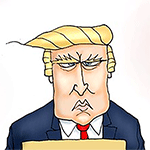US retail sales drop by most in two years amid fires, storms
Published in Business News
U.S. retail sales slumped in January by the most in nearly two years, indicating an abrupt pullback by consumers after a spending spree in the closing months of 2024.
The value of retail purchases, not adjusted for inflation, decreased 0.9% after an upwardly revised 0.7% gain in December, Commerce Department data showed Friday.
Nine of the report’s 13 categories posted decreases, most notably motor vehicles, sporting goods and furniture stores. The data encompassed a period marked by devastating wildfires in Los Angeles — the second-largest metropolitan area in the U.S. — and severe winter weather in other parts of the country, which could have depressed brick-and-mortar shopping activity.
Treasury yields dropped and the dollar remained lower after the release. A report later Friday showed U.S. industrial production rose in January as colder temperatures boosted demand for heating utilities, while manufacturing eased.
The retail figures follow strong readings in the final months of 2024, in a solid holiday season that helped the economy extend a healthy pace of growth.
The slowdown across many categories suggests other factors than the snowstorms and fires may be at play. Consumers are dealing with stubborn inflation and high borrowing costs, and many are increasingly turning to credit cards and other debt to support their spending — with a rising number of those loans starting to go bad.
Delinquency is becoming more common as borrowers face a third year of elevated interest rates. Federal Reserve Chair Jerome Powell reiterated this week that the central bank is in no rush to cut rates, especially after a report showed consumer prices picked up broadly in January.
“While households continue to take on more debt, the household sector is broadly in good financial shape and income growth remains supportive of a decent pace of consumption growth this year,” Wells Fargo & Co. economists Tim Quinlan and Shannon Grein said in a note.
President Donald Trump’s impending tariffs on a variety of goods from several countries could eventually trickle down to consumers. That had led some to stockpile on big-ticket items in recent months, but January declines in sales of furniture, sporting goods as well as electronics and appliances indicate that impulse is fading, according to Oliver Allen, senior U.S. economist at Pantheon Macroeconomics.
“Pulling forward sales in anticipation of new tariffs likely lifted consumers’ spending above its underlying trend late last year, but sets the stage for a drop below that trend thereafter,” Allen said in a note.
Tariffs may distort the retail sales numbers going forward — since they’re not adjusted for inflation, an advance could merely reflect higher prices rather than greater sales activity.
The data showed so-called control-group sales — which feed into the government’s calculation of goods spending for gross domestic product — declined 0.8% in January, also the most since March 2023. The measure excludes food services, auto dealers, building materials stores and gasoline stations.
Trump’s first-term tariffs were starting to drag on growth before the pandemic hit, which will be a key focus for economists and policymakers this time around.
The retail report largely reflects purchases of goods, which comprise a relatively narrow share of overall consumer outlays. Personal consumption expenditures data due later this month will provide more details on inflation-adjusted spending on goods and services in January.
Spending at restaurants and bars, the only service-sector category in Friday’s report, rose nearly 1%.
(With assistance from Chris Middleton and Mark Niquette.)
©2025 Bloomberg L.P. Visit bloomberg.com. Distributed by Tribune Content Agency, LLC.












Comments